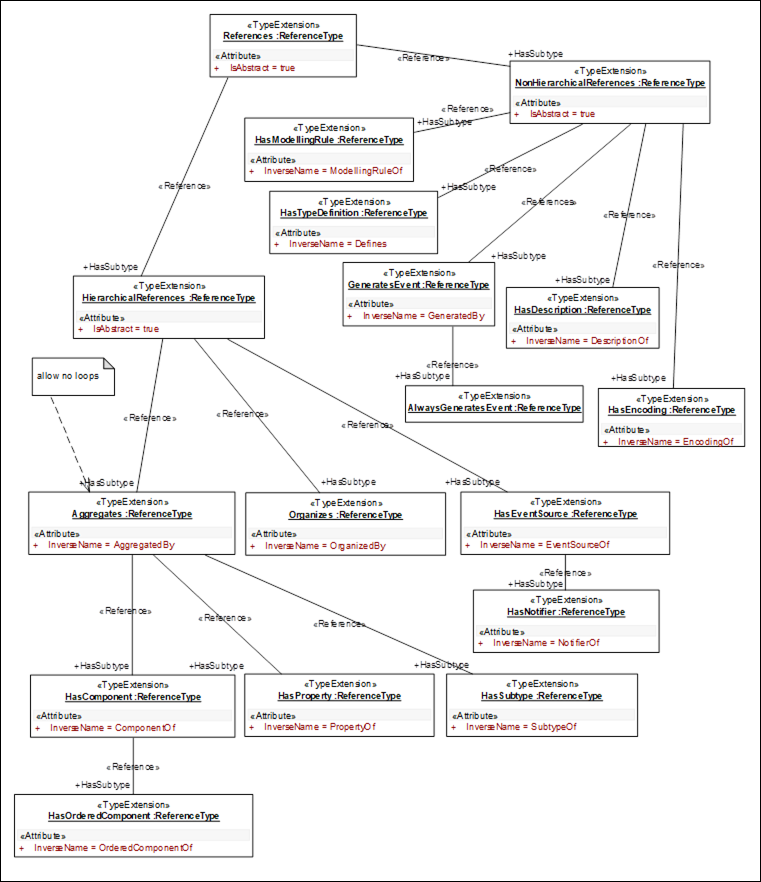Errata exists for this version of the document.
NOTE: Other parts of this series of standards can extend the OPC UA Meta Model by adding Attributes and defining new ReferenceTypes.
Base is shown in Figure B.4.

ReferenceType is shown in Figure B.5 and predefined ReferenceTypes in Figure B.6.

Figure B.5 – Reference and ReferenceType
If Symmetric is “false” and IsAbstract is “false” an InverseName shall be provided.

Figure B.6 – Predefined ReferenceTypes
Attributes are shown in Figure B.7.

There may be more Attributes defined in other parts of this series of standards.
Attributes used for references, which have a NodeId as DataType, are not shown in this diagram but are shown as stereotyped associations in the other diagrams.
Objects and ObjectTypes are shown in Figure B.8.

Figure B.8 – Object and ObjectType
EventNotifier are shown in Figure B.9.

Variable and VariableType are shown in Figure B.10.

Figure B.10 – Variable and VariableType
The DataType of a Variable shall be the same as or a subtype of the DataType of its VariableType (referred with HasTypeDefinition).
If a HasProperty points to a Variable from a Base “A” then the following constraints apply:
- The Variable shall not be the SourceNode of a HasProperty or any other HierarchicalReferences Reference.
- All Variables having “A” as the SourceNode of a HasProperty Reference shall have a unique BrowseName in the context of “A”.
Method is shown in Figure B.11

DataType is shown in Figure B.12.

View is shown in Figure B.13.
